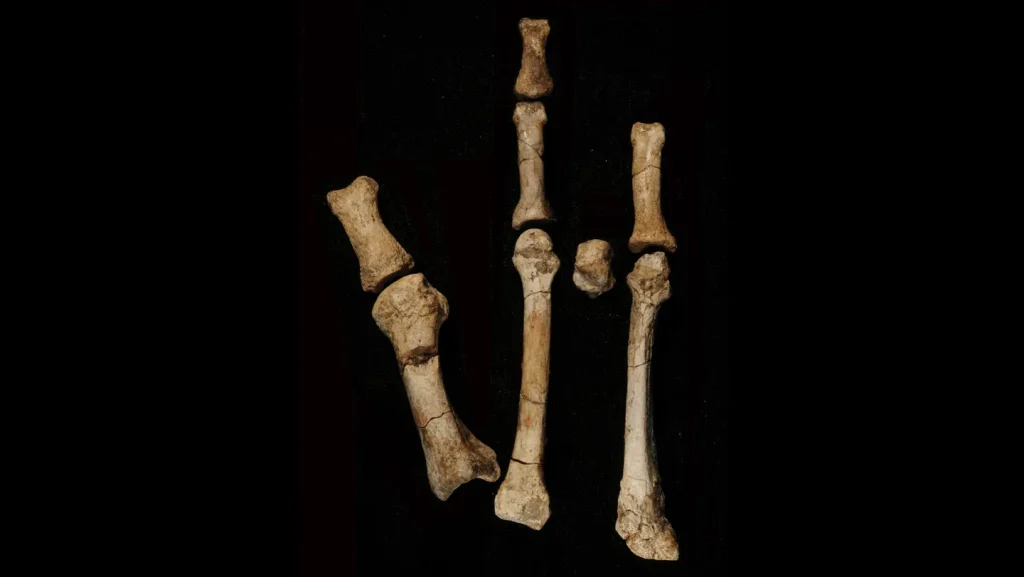A Revolutionary Discovery Reshapes Our Understanding of Human Evolution
In the arid landscapes of Ethiopia’s Afar Region, a chance discovery in 2009 would ultimately challenge long-held beliefs about human evolution. When Stephanie Melillo, then a graduate student working with paleoanthropologist Yohannes Haile-Selassie, stumbled upon an ancient foot bone at the Burtele site, neither could have predicted how significant this find would become. “When she came over and showed it to me, I just told her, go back, the other half should be there,” recalls Haile-Selassie, now at Arizona State University. What began as the discovery of a single metatarsal bone – the one connecting to the fourth toe – would eventually blossom into a revelation that multiple human ancestors coexisted in ancient Africa, fundamentally altering our understanding of our evolutionary past.
The team’s meticulous search, conducted on hands and knees, yielded eight pieces of a partial forefoot dating to approximately 3.4 million years ago. Initially called the Burtele foot, these fossils presented an immediate conundrum. They clearly didn’t belong to Australopithecus afarensis – the famous human relative represented by the iconic Lucy skeleton – despite originating from the same time and place. This was a startling realization, as conventional wisdom had long held that A. afarensis was the sole early human relative inhabiting this region of Africa between 3.8 and 3 million years ago. Lucy’s species had been viewed as “the ancestral species that give rise to everything else, the mother of us all,” explains Fred Spoor, a paleontologist at London’s Natural History Museum.
After years of additional research and excavations near the original discovery site, Haile-Selassie and his team announced in November 2023 in the journal Nature that the Burtele foot likely belonged to a distinct species: Australopithecus deyiremeda. This conclusion came after uncovering more fossils, including fragments of a pelvis, skull, jaw, and teeth, all in close proximity to the original foot bones. While A. deyiremeda had been initially named in 2015 based on jaw fragments, the researchers initially lacked sufficient evidence to attribute the foot bones to this species. The new discoveries changed that. “This is the most conclusive evidence to show that multiple related species coexisted at the same time in our evolutionary history,” Haile-Selassie explains, highlighting the paradigm-shifting nature of their findings.
The anatomical differences between these coexisting species paint a fascinating picture of divergent evolutionary paths. A. deyiremeda appears to have retained more primitive features than A. afarensis, including a grasping big toe that would have facilitated tree climbing. Chemical analysis of teeth suggests A. deyiremeda primarily consumed plants from wooded areas – leaves, shrubs, and fruits – representing a less diverse diet than the varied menu of foods from both grasslands and forests that A. afarensis enjoyed. These differences reflect distinct ecological niches and survival strategies employed by contemporaneous hominin species, challenging the long-held view of a single, linear evolutionary path.
Not all experts agree with the classification of these fossils as a separate species, however. Leslea Hlusko, a paleoanthropologist at Spain’s National Centre for Research on Human Evolution, suggests that A. deyiremeda might instead represent an intermediate evolutionary stage between A. anamensis (an earlier species that lived between 4.2 and 3.8 million years ago) and A. afarensis. “If you have this evolving lineage, it’s kind of exactly what you would expect: that there’s going to be some features of the earlier species and some features of the species that comes next,” Hlusko explains. She also points to the incomplete nature of the Burtele foot and the natural variation within A. afarensis specimens as reasons for caution in declaring a new species.
Regardless of taxonomic debates, all researchers acknowledge significant gaps in our understanding of human evolution. The fossil record remains frustratingly incomplete, with major gaps between 7 and 4.5 million years ago – a critical period that could reveal details about the split between chimpanzees and human ancestors – and between 3.2 and 2.8 million years ago, when our own genus Homo is thought to have emerged. As Haile-Selassie aptly puts it, until more fossils are discovered, scientists can only piece together a partial picture of human evolution from the fragmented remains of our distant past. The Burtele discoveries remind us that human evolution was not a straight line but rather a complex, branching tree with multiple contemporaneous species adapting to different environments and lifestyles – a humbling reminder of the rich diversity that characterized our evolutionary journey.


